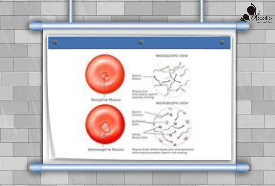HIPEREMESIS GRAVIDARUM

In early pregnancy or during the first trimester, approximately 10 weeks almost 50-90% experience morning sickness. There is the suggestion that morning sickness protects the embryo by causing pregnant women to vomit physically and then avoid foods containing teratogenic and abortifacient chemicals, especially toxic chemicals in vegetables with strong flavor, caffeinated beverages and alcohol (Flaxman and Sherman, 2000). However, if severe vomiting nausea can affect the condition of pregnant women.
Understanding Hiperemsis gravidarum
Hyperemesis Gravidarum is where the situation of pregnant women experience nausea and vomiting which to interfere with everyday activities can even cause complications or endanger the circumstances of pregnant women and even the fetus it contains (Manuaba, 2010). In primigravida (first pregnancy) the incidence of hyperemesis gravidarum is about 60-80%, while the incidence rate on multigravida (second pregnancy or so on) is about 40-60%.
In general, hyperemesis gravidarum can be grouped into 3, including:
1. Level I:
A. Vomiting continuously so as to cause: Dehydration cause skin turgor down, decreased appetite, Weight loss, Concave eyes and dry tongue.
B. Epigastrium nyerikarena stomach acid increases and regurgitation occurs to the esophagus
C. The pulse increases and the blood pressure falls
D. The pulse rate is about 100 times / min
E Looks weak and weak
2. Level II:
A. Dehydration is increasing as a result: The skin turgor is getting down, The tongue is dry and dirty, The eyes appear sunken and slightly jaundiced
B. Cardiovascular: The frequency of the pulse is faster> 100 times / min, Small pulse due to decreased blood volume, increased body temperature and decreased blood pressure
C. Liver: Liver function is disrupted causing jaundice
D. Kidneys: Dehydration causes kidney function disorder which causes Oliguria, Anurin, There are stockpiles of acetone ketone. Acetone can smell in the air
E. Sometimes vomiting mixed with blood due to esophageal rupture and rupture of the gastric mucosa in mallory weiss syndrome.
Tier III:
A. The general condition is more severe
B. Vomiting stopped
C.Mallory weiss syndrome
D.Kadadaan kesadran decreased to reach somnollen or koma
E. Cardiovascular: Small pulse, downhill pressure, and temperature rise
F.Gastrointestinal: The jaundice gets heavier and there is a higher accretion of acetone with an increasingly sharp smell
Kidney: Oliguria gets worse and becomes anuria
Causes of Hyperemesisi Gravidarum
For the exact cause of hyperemesis gravidarum is still unknown. Based on some theories, biological factors that play the most role is due to changes in hormone levels during pregnancy.
1. According to the latest theory, increasing levels of Human Chorionic Gonadotropin (HCG) will induce the ovaries to produce estrogen that can stimulate nausea and vomiting. The incidence of hyperemesis gravidarum is elevated in conditions associated with high levels of HCG in the mother's body, ie during twins and moles (grape pregnancy), pregnancy of the female fetus (Danzer et al., 1980; Goodwin et al., 1994; Askling et al ., 1999; del Mar Melero-Montes and Jick, 2000; Basso and Olsen, 2001; Furneaux et al., 2001; James, 2001; Steier Et al., 2004).
2. Nausea is one of the common side effects of estrogen treatment, supporting the hypothesis that estrogen may be associated with hyperemesis gravidarum. Estrogen has an effect on several mechanisms that can modulate the factors that cause hyperemesis gravidarum. High estrogen levels lead to slower intestinal transit times and gastric emptying, and result in increased fluid accumulation caused by increased steroid hormones.
3. Changes in pH in GIT may lead to subclinical Helicobacter pylori infection manifestations, which may be associated with gastrointestinal symptoms. Based on a study of 95% of hyperemesis gravidarum patients tested positive for H. pylori compared with 50% in the control group (Bagis et al., 2002). They also found significantly higher H. pylori densities in the antrum of the stomach and corpus in hyperemesis gravidarum patients. The density of H. pylori can be attributed to the severity of the symptoms and may be an explanation for the difference between ordinary morning sickness and severe hyperemesis gravidarum. Although H. pylori infection has been observed more frequently in patients with hyperemesis gravidarum, most are asymptomatic.
4. Immunology During pregnancy, immune system and cell mediated changes occur. Perhaps the most important aspect of this change is to protect the fetus and the decidua from interference by the mother's immune system. It has been suggested that changes in the physiological immune responses to pregnancy cause pregnancy-related disorders. In accordance with this hypothesis, hyperemesis gravidarum has been regarded as the result of an overactive immune system, which can in part be attributed to pregnancy hormone synthesis.
5. Gastric and intestinal mobility decreases during pregnancy causing intestinal transit time and slow colon as well as slow gastric emptying this can also cause nausea.
6.Conflicts of psychology, hatred of pregnancy or ambivalence of women who are not ready to be mothers due to immature personality, strong maternal dependence, and anxieties and tensions associated with pregnancy can also cause nausea.
Impact of Hyperemesis gravidarum
1. In pregnant women: dehydration, metabolic disorders, weight loss and carbohydrates will be used up for energy needs.
2.At the outcome of pregnancy: low birth weight (LBW), premature birth and fetal malformation.
Prevention and Treatment Hyperemesis gravidarum
1.Agar nausea vomiting is not excessive, pregnant women are advised to eat small amounts but often, high-carbohydrate diet, low protein and low fat, avoid iron supplementation for a while. Must consume lots of fruits and vegetables such as chicken, potato, mustard, turnip, cauliflower that contain vitamin B6, avoid foods high in fat.
2. Drink water every 30 minutes before and after meals. Drink plenty of water to replace fluids that have been lost due to frequent nausea and vomiting.
3.Atasi nausea with warm ginger drink, avoid oily foods and fatty foods should be served hot or very cold, for those who do not have problems with blood sugar levels, it is advisable to consume foods that contain lots of sugar.
4. To reduce vomiting, massage the vomit point by using the thumb for 10-15 minutes
5. However, if the mother continues to vomit, immediately consult a doctor. Handling to be performed doctor include:
A) Drug delivery
The doctor will give you medicines that are considered necessary, such as antihistamines, vitamins B1 and B6. In more severe cases should be hospitalized.
B) Isolation
Mother will be treated in a quiet room with adequate lighting, until the vomiting stops and the appetite returns.
C) Psychological explanation.
If the problem is psychological, then solve it immediately. After the mother's psychic condition stabilizes, by itself hyperemesis gravidarum will stop.




